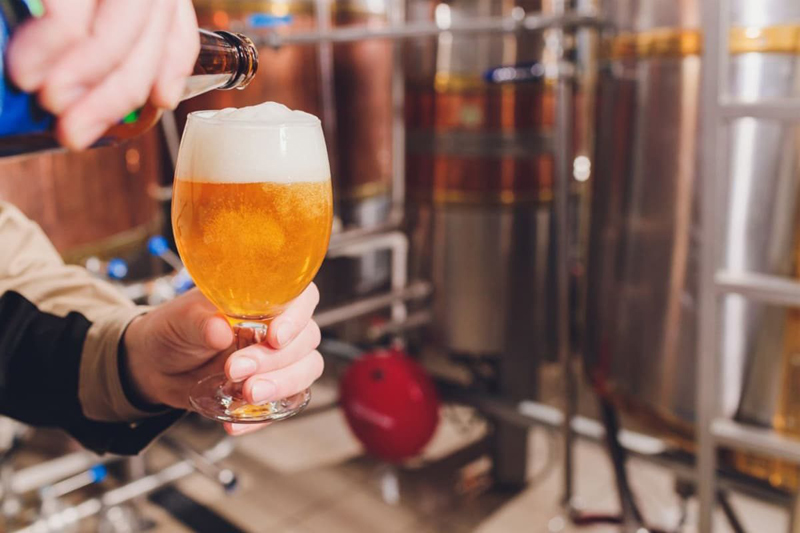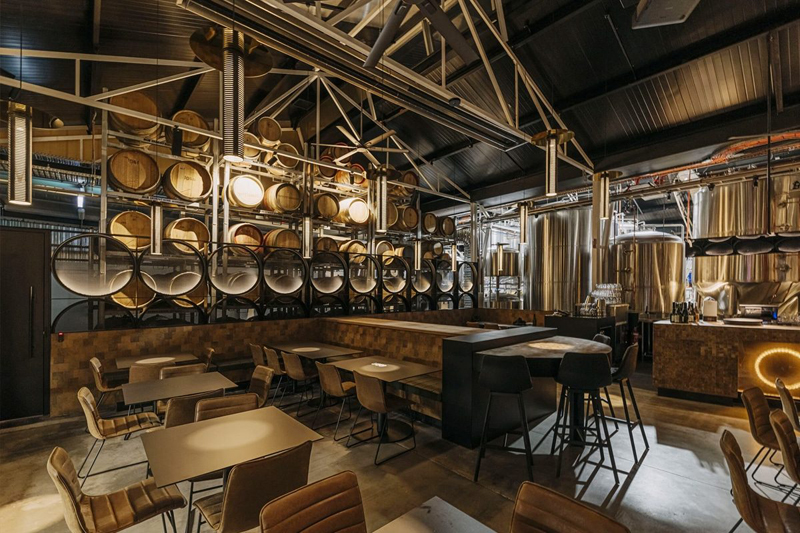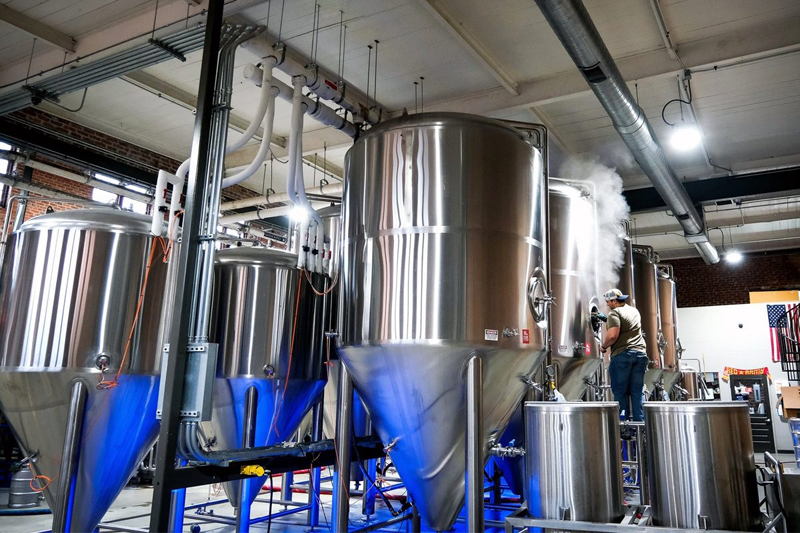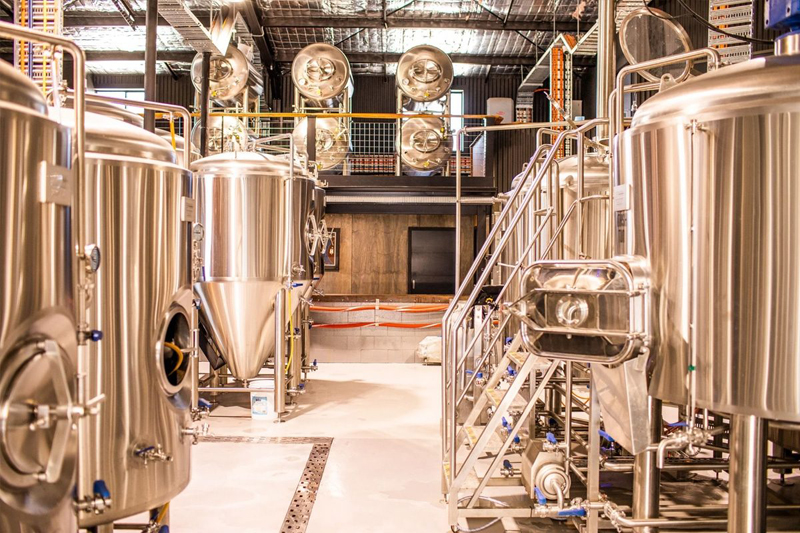How Does The Brewing Process Work?
Brewing beer is an age-old craft that transforms simple ingredients into a complex and flavorful beverage enjoyed worldwide. The process combines art, science, and tradition, beginning with the selection of quality barley and extending through meticulous steps including malting, mashing, boiling, fermenting, conditioning, and packaging. Each phase of brewing is crucial, contributing unique characteristics and ensuring the final product is not only safe to drink but also rich in flavor and aroma.
Understanding the brewing process unveils the intricate dance of enzymes, yeast, and carefully controlled conditions that convert grains, hops, water, and yeast into the diverse array of beers we savor. This article explores each step in detail, highlighting the techniques and technologies that brewers use to create their distinctive brews, from the initial preparation of raw ingredients to the final pour.
Complete Guide:
1.Introduction to Brewing
2.Ingredients of Beer
3.The Brewing Process
4.Brewing Different Styles of Beer
5.Get A Turnkey Brewery Solutions
1.Introduction to Brewing
Brewing beer is a meticulous and ancient craft that transforms simple ingredients into a delightful beverage enjoyed worldwide. The process begins with the selection of four primary ingredients: barley, hops, water, and yeast. Each of these components plays a crucial role in shaping the beer’s flavor, aroma, and character. Brewing involves several key stages: malting, milling, mashing, lautering, boiling, whirlpooling, cooling, fermenting, conditioning, and packaging. Throughout these stages, the brewer must carefully control temperatures, timings, and ingredient combinations to create the desired outcome. The art and science of brewing lie in the precise handling of these steps, ensuring that the natural enzymatic and fermentation processes produce a consistent and high-quality beer. Understanding these stages offers a glimpse into the complexity and skill required to transform raw materials into the rich and varied world of beer.
2.Ingredients of Beer
The brewing process relies on four primary ingredients: water, malt, hops, and yeast. Each of these ingredients plays a critical role in shaping the flavor, aroma, appearance, and overall character of the beer. Understanding their contributions and interactions helps to understand the complexity and craft of brewing.
Water
Water is the most abundant ingredient in beer, typically making up 90-95% of the final product. Its quality and composition are crucial as they can significantly affect the brewing process and the beer’s taste. Key factors include:
& Mineral Content: Minerals such as calcium, magnesium, and bicarbonate influence the water’s pH and hardness, affecting the enzymatic activity during mashing and the hop bitterness during boiling.
& pH Levels: The optimal water pH for brewing is around 5.2-5.5. Proper pH levels ensure efficient enzymatic reactions and extraction of flavors.
& Purity: Water must be free of contaminants and unwanted chemicals, such as chlorine and chloramine, which can impart off-flavors.
Brewers often adjust their water profile by adding minerals or using filtration methods to achieve the desired characteristics for different beer styles.
Malt
Malt is primarily sourced from barley, although other grains like wheat, rye, and oats can also be used. Malt provides the fermentable sugars necessary for alcohol production and contributes to the beer’s color, flavor, and body.
& Malting Process: Barley grains are soaked in water (steeping), allowed to germinate (germination), and then dried in a kiln (kilning). This process develops enzymes that convert starches into fermentable sugars during mashing.
& Flavor Contribution: Malt imparts flavors ranging from sweet and biscuity to rich and roasted, depending on the type and degree of killing.
Hops
Hops are the flowering cones of the hop plant (Humulus lupulus) and are primarily responsible for the bitterness, flavor, and aroma of beer. They also act as a natural preservative.
& Bittering Hops: Added early in the boil, these hops provide bitterness to balance the sweetness of the malt.
& Flavor and Aroma Hops: Added later in the boil or during fermentation (dry hopping), these hops impart a range of flavors and aromas, from floral and citrusy to piney and spicy.
& Alpha Acids: The primary compounds in hops that contribute bitterness. The higher the alpha acid content, the more bitterness the hops will impart.
& Essential Oils: These volatile compounds are responsible for the hop’s aroma and are preserved by adding hops late in the brewing process.
Yeast
Yeast is the microorganism responsible for fermentation, converting fermentable sugars into alcohol and carbon dioxide. There are two main types of yeast used in brewing: ale yeast and lager yeast.
& Ale Yeast: Top-fermenting yeast that works at warmer temperatures (15-24°C). It typically ferments quickly and imparts fruity and complex flavors. It is used in a wide range of beer styles, including pale ales, stouts, and IPAs.
& Lager Yeast: Bottom-fermenting yeast that works at cooler temperatures (7-13°C). It ferments more slowly and produces a clean, crisp taste with fewer fruity esters. It is used in lagers, pilsners, and bocks.
& Fermentation Byproducts: Yeast produces various byproducts during fermentation, including esters, phenols, and other compounds that contribute to the beer’s flavor profile. Proper yeast management and fermentation conditions can help achieve the desired flavor.
Each of these ingredients—water, malt, hops, and yeast—plays a vital role in the brewing process. By carefully selecting and balancing these components, brewers can create a vast array of beer styles, each with its unique characteristics and flavors. If you want to know more about beer ingredients, you can read the following article: “What Ingredients Are Needed To Brew Beer?“.
3.The Brewing Process
The brewing process is a fascinating journey that transforms raw ingredients into beer through a series of carefully controlled steps. Each stage contributes to the flavor, aroma, and overall quality of the beer. Here’s a detailed look at each step in the brewing process:
Malting
Malting is the initial step where barley grains are prepared for brewing. This process involves three main stages:
& Steeping: Barley grains are soaked in water for 2-3 days to absorb moisture, triggering germination.
& Germination: The soaked grains are spread out and allowed to germinate over 4-6 days. During this time, enzymes develop that convert the grain’s starches into fermentable sugars.
& Kilning: Germination is halted by drying the grains in a kiln. The temperature and duration of kilning influence the malt’s color and flavor, ranging from pale malts to dark, roasted varieties.
Milling
Milling involves crushing the malted barley to break it into smaller pieces. This increases the surface area for water absorption and enzymatic activity during mashing, ensuring efficient extraction of fermentable sugars.
Mashing
Mashing is where the milled grains are mixed with hot water in a mash tun to create a thick, porridge-like mixture. This process activates enzymes that convert starches into fermentable sugars, producing a sugary liquid called wort. The mash is typically held at specific temperatures to optimize enzyme activity:
& Beta-glucan Rest (35-45°C): Breaks down beta-glucans to improve wort filtration.
& Protein Rest (45-55°C): Breaks down proteins, enhancing head retention and clarity.
& Mashing Rest (60-70°C): Converts starches into fermentable sugars.
Lautering
Lautering is the process of separating the wort from the spent grain husks. It involves:
& Mashout: Raising the mash temperature to around 75-78°C to halt enzymatic activity and make the wort more fluid.
& Recirculation: Clarifying the wort by recirculating it through the grain bed.
& Sparging: Rinsing the grain bed with hot water to extract the remaining sugars. The resulting liquid wort is collected and transferred to the boil kettle.
Boiling
Boiling the wort serves several purposes, including sterilization, hop addition, and wort concentration. This stage typically lasts 60-90 minutes:
& Sterilization: Boiling kills any unwanted microorganisms.
& Hop Addition: Hops are added at various stages of the boil to impart bitterness, flavor, and aroma. Bittering hops are added early, flavor hops midway, and aroma hops towards the end.
& Wort Concentration: Evaporation of excess water concentrates the wort.
Cooling
After boiling, the wort must be cooled rapidly to prepare it for fermentation and prevent contamination. This is typically done using a heat exchanger, which cools the wort to the desired fermentation temperature (usually 10-20°C).
Fermentation
Fermentation is the process where yeast converts fermentable sugars in the wort into alcohol and carbon dioxide, producing beer:
& Pitching Yeast: Adding yeast to the cooled wort in a fermentation vessel.
& Primary Fermentation: Yeast ferments the sugars, producing alcohol, CO2, and various flavor compounds. This phase usually lasts 1-2 weeks.
& Secondary Fermentation: The beer may be transferred to another vessel for further maturation and clarification, lasting several weeks to months.
Conditioning
Conditioning is the maturation phase where the beer develops its final flavor, carbonation, and clarity:
& Maturation: Aging the beer to allow flavors to meld and mature.
& Carbonation: Achieved through natural methods (adding priming sugar for bottle conditioning) or forced carbonation (adding CO2 directly).
& Clarification: Remove any remaining yeast and particles through filtration or fining agents.
Filtration and Clarification
Filtration and clarification ensure the beer is clear and free of unwanted particulates:
& Filtration: Passing the beer through filters to remove yeast, proteins, and other solids.
& Fining: Adding agents like isinglass or Irish moss to bind with and settle out suspended particles.
Carbonation
Carbonation is the process of dissolving carbon dioxide in the beer to give it its fizzy characteristic. This can be done naturally during fermentation or artificially by injecting CO2 into the beer.
Packaging
Packaging is the final step, preparing the beer for distribution and consumption:
& Kegging: Filling kegs for draft service.
& Bottling/Canning: Filling bottles or cans, then sealing, labeling, and packaging them.
& Quality Control: Testing each batch for consistency, flavor, and carbonation levels before release.
Each of these steps is vital to producing high-quality beer. By carefully controlling each stage, brewers can create a vast array of beer styles, each with unique flavors and characteristics. Understanding the brewing process highlights the skill and precision required to transform raw ingredients into the beloved beverage we know as beer.
4.Brewing Different Styles of Beer
The brewing process can be adapted and modified to create a wide variety of beer styles, each with its unique flavor, aroma, and appearance. Two of the primary categories of beer are ales and lagers, differentiated by the type of yeast used and the fermentation process. Additionally, specialty beers encompass a diverse range of styles that often include unique ingredients or unconventional brewing techniques. Understanding how different styles are brewed offers insight into the vast world of beer.
Ales VS Lagers
Ales and lagers are the two main families of beer, each defined by the type of yeast used and the fermentation process.
Ales
& Yeast: Ales use top-fermenting yeast (Saccharomyces cerevisiae) that ferments at warmer temperatures, typically between 15-24°C (59-75°F).
& Fermentation: The warmer fermentation temperatures result in a quicker fermentation process, often completed in just a few days to a week.
& Flavor Profile: Ales tend to have a more complex and robust flavor profile with fruity and spicy notes due to the esters and phenols produced during fermentation.
& Styles: Common ale styles include Pale Ale, India Pale Ale (IPA), Stout, Porter, Belgian Ale, and Wheat Beer.
Lagers
& Yeast: Lagers use bottom-fermenting yeast (Saccharomyces pastorianus) that ferments at cooler temperatures, typically between 7-13°C (45-55°F).
& Fermentation: The cooler fermentation temperatures lead to a slower and longer fermentation process, often taking several weeks to months.
& Flavor Profile: Lagers are known for their clean, crisp, and smooth taste with subtle flavors, as the cooler fermentation temperatures inhibit the production of esters and phenols.
& Styles: Common larger styles include Pilsner, Helles, Dunkel, Bock, and Märzen.
Ale and lager have different yeasts and fermentation temperatures, resulting in different flavors and characteristics, catering to the different preferences of beer lovers.
Specialty Beers
Specialty beers encompass a broad category of beers that often include unique ingredients, unconventional brewing techniques, or distinct fermentation processes. These beers showcase the creativity and innovation of brewers, resulting in a wide array of flavors and styles.
Fruit Beers
& Ingredients: Fresh fruits, fruit purees, or extracts are added during fermentation or conditioning.
& Flavor Profile: These beers have a pronounced fruit flavor and aroma, balancing the sweetness and acidity of the fruit with the malt and hop characteristics.
Spiced and Herb Beers
& Ingredients: Spices, herbs, and botanicals such as coriander, ginger, pepper, and lemongrass are used to enhance the beer’s flavor.
& Flavor Profile: These beers can have complex and aromatic profiles, with the added spices and herbs complementing the base beer style.
Sour Beers
& Fermentation: Sour beers are typically fermented with wild yeast strains (such as Brettanomyces) and bacteria (such as Lactobacillus and Pediococcus) that produce lactic acid and other organic acids.
& Flavor Profile: These beers are tart and tangy, with varying levels of acidity. Common sour beer styles include Berliner Weisse, Gose, Lambic, and Flanders Red Ale.
Barrel-Aged Beers
& Process: Beer is aged in barrels previously used for aging wine, whiskey, or other spirits. The beer absorbs flavors from the barrel, including oak, vanilla, and residual alcohol.
& Flavor Profile: Barrel-aged beers often have complex and layered flavors, with notes of wood, vanilla, caramel, and the previous contents of the barrel.
Smoked Beers
& Ingredients: Smoked malt, where the malted barley is dried over an open flame or smoke, is used to impart a smoky flavor.
& Flavor Profile: These beers have a distinct smoky aroma and taste, reminiscent of smoked foods. Rauchbier is a traditional German smoked beer style.
Hybrid Beers
& Brewing Techniques: Hybrid beers combine elements of both ale and lager brewing techniques, such as fermenting ale yeast at cooler temperatures or using lager yeast at warmer temperatures.
& Styles: Common hybrid styles include Kölsch and California Common (Steam Beer), which blend the characteristics of both ales and lagers.
By varying the ingredients, yeast strains, fermentation methods, and aging processes, brewers can create an endless variety of beer styles, each with its unique attributes. This diversity allows beer enthusiasts to explore and enjoy a wide range of flavors and experiences, from the traditional to the experimental.
5.Get A Turnkey Brewery Solutions
The brewing process is a complex and meticulous journey that transforms basic ingredients—water, malt, hops, and yeast—into a flavorful and enjoyable beverage. It begins with malting, where grains are prepared and enzymes activated, followed by milling to break down the grains. Mashing mixes these grains with hot water to convert starches into sugars, creating wort. Lautering separates the wort from spent grains, and boiling sterilizes the wort while adding hops for bitterness and aroma. The wort is then cooled and yeast is added for fermentation, where sugars turn into alcohol and CO2. After fermentation, conditioning allows the beer to mature and develop its flavors. Filtration and clarification ensure clarity, while carbonation gives the beer its effervescence. Finally, the beer is packaged for distribution. Each step requires careful control and precision to ensure the final product meets the desired quality and flavor profile, showcasing the art and science of brewing.
For those looking to enter the brewing industry or upgrade their current operations, Alston brew offers comprehensive turnkey brewery solutions tailored to your needs. As a professional brewery solution provider, Alston brew streamlines the entire process from conceptualization to installation, ensuring your brewery equipment is equipped with state-of-the-art technology and designed for optimal efficiency. Our solutions cover every aspect of brewing, including custom-designed brewhouse equipment, fermentation tanks, bright tanks, and packaging lines, all configured to meet your specific production requirements.
Alston brew’s team of experts provides thorough training and support, ensuring your staff is proficient in operating and maintaining the equipment. Additionally, our advanced automation systems and quality control measures guarantee consistent, high-quality beer production. By choosing Alston brew, you benefit from our extensive industry experience, innovative solutions, and commitment to excellence, allowing you to focus on what you do best—brewing exceptional beer. Let us help you turn your brewing vision into reality with a reliable, turnkey brewery solution.
Post time: Jul-27-2024





